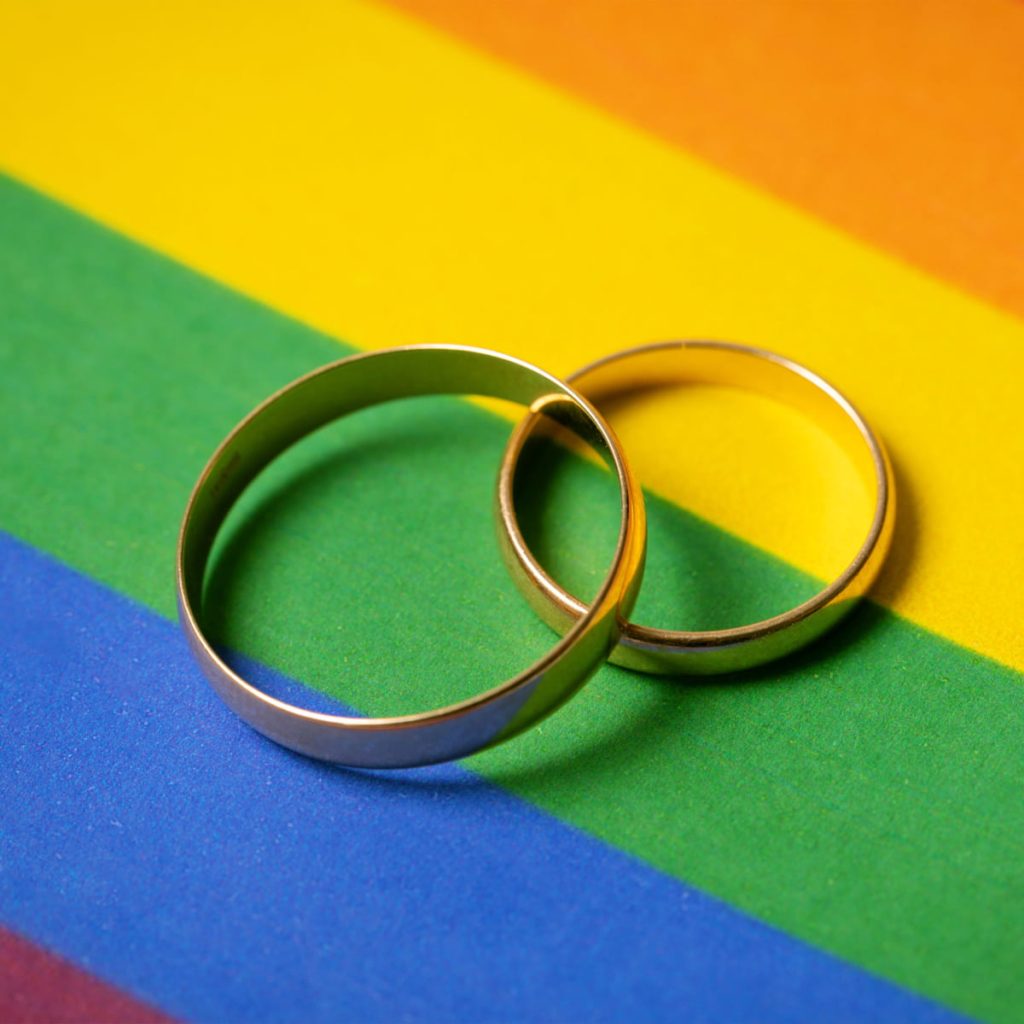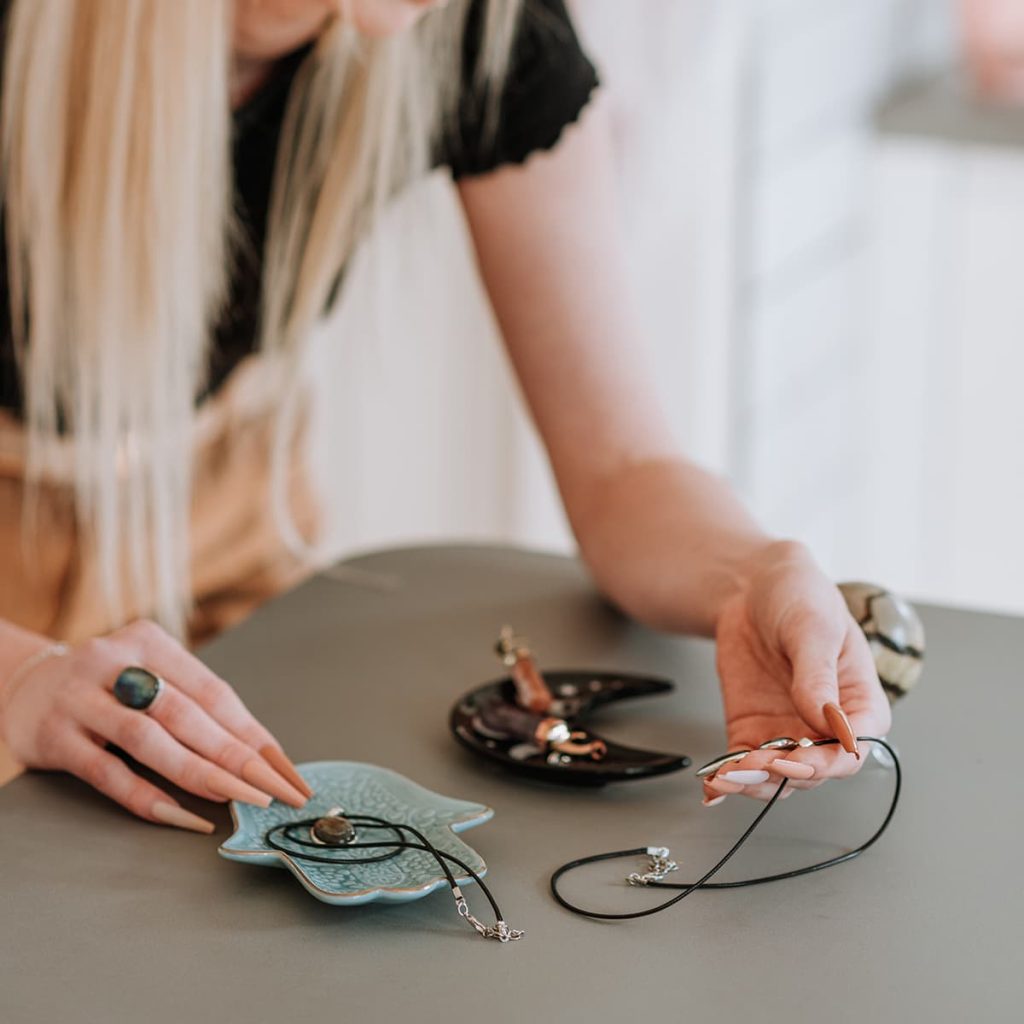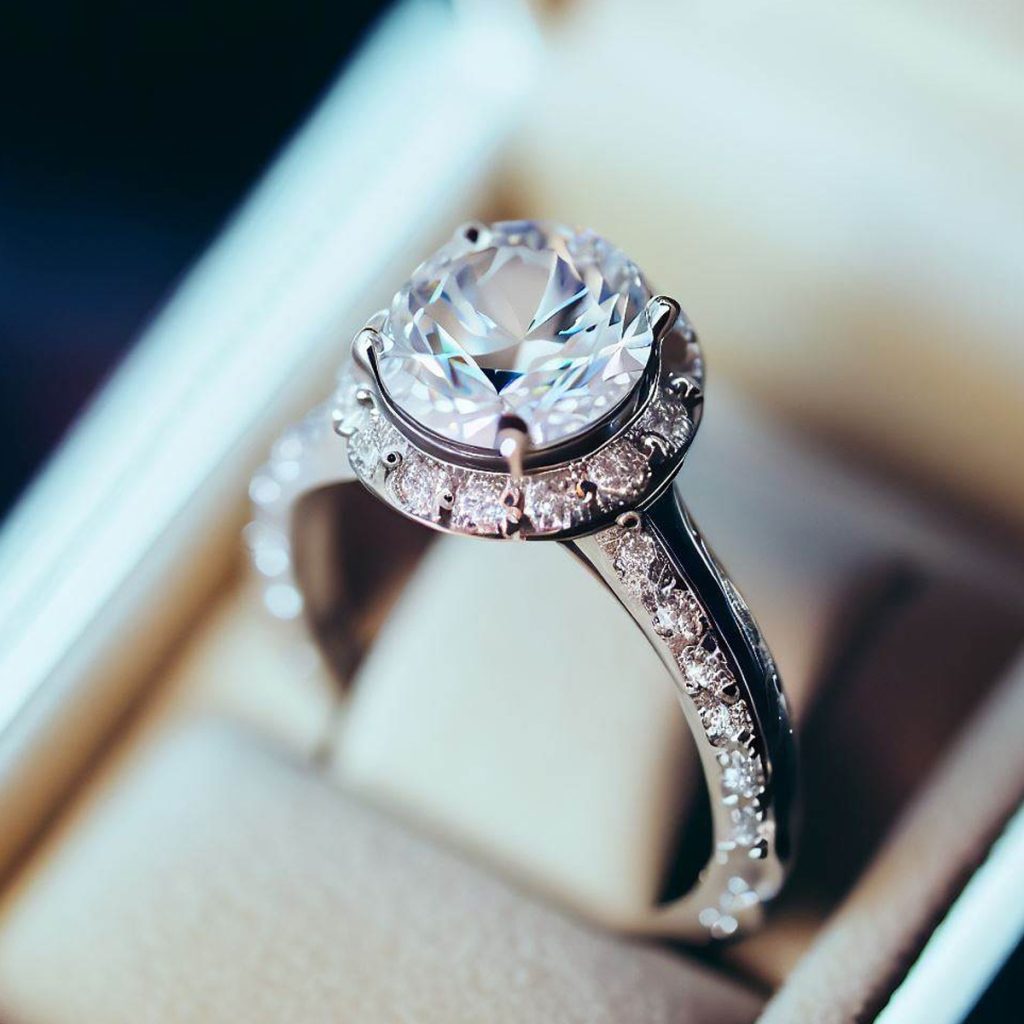Jewellery has been an integral part of human culture for centuries, serving as a symbol of status, love, and personal expression. Throughout history, certain jewellery styles have not only stood the test of time but have also seen revivals as fashion trends evolve. These timeless pieces continue to captivate us, blending historical significance with modern aesthetics. In this article, we explore the top 12 classic jewellery styles that have been loved through the ages and discuss why they remain as popular today as ever.
Victorian Mourning Jewellery: A Touch of Melancholy Beauty
Originating in the mid to late 19th century, Victorian mourning jewellery was created during an era when wearing black and mourning the deceased was a deeply ingrained social custom. These pieces were often made from dark materials such as jet, onyx, or even human hair, and were designed to be both beautiful and sombre. The intricate details and craftsmanship of Victorian mourning jewellery make it a unique and cherished style that has seen a resurgence in modern Gothic and vintage-inspired fashion. Today, these pieces are valued not only for their beauty but also for the emotional connection they represent, making them a powerful statement of personal history.
Art Nouveau Jewellery: Nature’s Art in Exquisite Designs
Created between 1890 and 1910, Art Nouveau jewellery is celebrated for its organic and nature-inspired designs. This style was a reaction against the industrialisation of the time, with artists and jewellers turning to flowing lines, floral motifs, and soft, curving forms. The use of materials such as enamel, glass, and semi-precious stones further emphasised the natural beauty that Art Nouveau sought to capture. In recent years, this style has experienced a revival, with contemporary artisans and luxury brands incorporating its delicate and ethereal elements into statement pieces. The enduring appeal of Art Nouveau lies in its ability to evoke a sense of harmony with the natural world, making it a favourite among those who appreciate both artistry and craftsmanship.
Edwardian Lace Jewellery: Delicate Designs That Endure
The Edwardian era (1901-1910) brought with it a jewellery style that was as elegant as it was intricate. Edwardian lace jewellery is characterised by its delicate, lace-like patterns, often crafted from platinum and adorned with diamonds and pearls. These pieces were designed to complement the luxurious fashions of the time, which included delicate fabrics and ornate details. The lightness and intricacy of Edwardian lace jewellery have ensured its continued popularity, particularly in bridal collections where it adds a touch of vintage sophistication. The resurgence of this style in modern fine jewellery reflects a desire for pieces that are both timeless and exquisitely crafted.
Art Deco Jewellery: Bold, Geometric Glamour
The 1920s and 1930s were defined by the bold and glamorous designs of Art Deco jewellery. This style is instantly recognisable by its geometric shapes, sharp lines, and use of vibrant colours. Influenced by the machine age and the discovery of Tutankhamun’s tomb, Art Deco jewellery often features strong contrasts, such as platinum set with emeralds, sapphires, or rubies. The sleek and sophisticated designs of this era have made Art Deco a perennial favourite, with modern reinterpretations appearing in everything from engagement rings to fashion accessories. The enduring popularity of Art Deco jewellery lies in its ability to make a statement while remaining undeniably elegant.
Egyptian Revival Jewellery: Timeless Mystique
The discovery of Tutankhamun’s tomb in 1922 sparked a fascination with ancient Egypt that was reflected in the Egyptian Revival jewellery of the 1920s. This style is characterised by motifs such as scarabs, ankh symbols, and hieroglyphics, often rendered in materials like gold, turquoise, and lapis lazuli. The allure of Egyptian Revival jewellery lies in its connection to a civilisation that is both mysterious and historically significant. Today, these motifs continue to inspire designers, particularly in bohemian and luxury collections, where they add a touch of exoticism and mystique. The timeless appeal of Egyptian Revival jewellery is a testament to the enduring fascination with the ancient world.
Retro Jewellery: Bold and Beautiful Statements
Emerging in the 1940s, Retro jewellery is known for its bold, chunky designs that often feature large gemstones and strong, curved lines. This style was heavily influenced by Hollywood glamour, with pieces designed to be seen and admired. Retro jewellery often incorporates bright, contrasting colours and materials such as yellow gold and rose gold, which add to its vibrant and eye-catching appeal. The revival of Retro jewellery in modern times has seen these statement pieces become popular once again, particularly in cocktail rings and large brooches. The boldness and beauty of Retro jewellery make it a favourite for those who love to make a statement with their accessories.
Choker Necklaces: A Style That Comes Full Circle
Choker necklaces have a history that dates back to the late 19th century, but they gained widespread popularity in the 1990s as a fashion statement. This style has made a strong comeback in recent years, with modern variations ranging from delicate chains to velvet bands adorned with pendants. Chokers are celebrated for their versatility, as they can be both elegant and edgy, depending on the design and materials used. The resurgence of choker necklaces in contemporary fashion reflects their ability to complement a wide range of styles, from casual to formal. Their ability to add a touch of sophistication or a hint of rebellion makes them a timeless accessory that continues to evolve with each generation.
Minimalist Jewellery: The Subtle Beauty of Simplicity
In the 1960s, minimalist jewellery emerged as a stark contrast to the ornate and elaborate designs of previous decades. Characterised by clean lines, simple shapes, and understated elegance, this style focuses on the essence of the piece without unnecessary embellishments. The resurgence of minimalist jewellery in recent years has seen it become a staple in both everyday wear and high-end fashion. This trend appeals to those who appreciate subtlety and the beauty of pure form, making it an ideal choice for individuals who prefer a less-is-more approach to their accessories.
The modern appeal of minimalist jewellery lies in its versatility. Pieces can be worn alone for a delicate touch or layered with other items for a more personalised look. The simplicity of minimalist designs allows them to transcend trends, ensuring that they remain timeless. Whether it’s a sleek gold bangle or a pair of understated stud earrings, minimalist jewellery offers a refined elegance that complements any outfit.
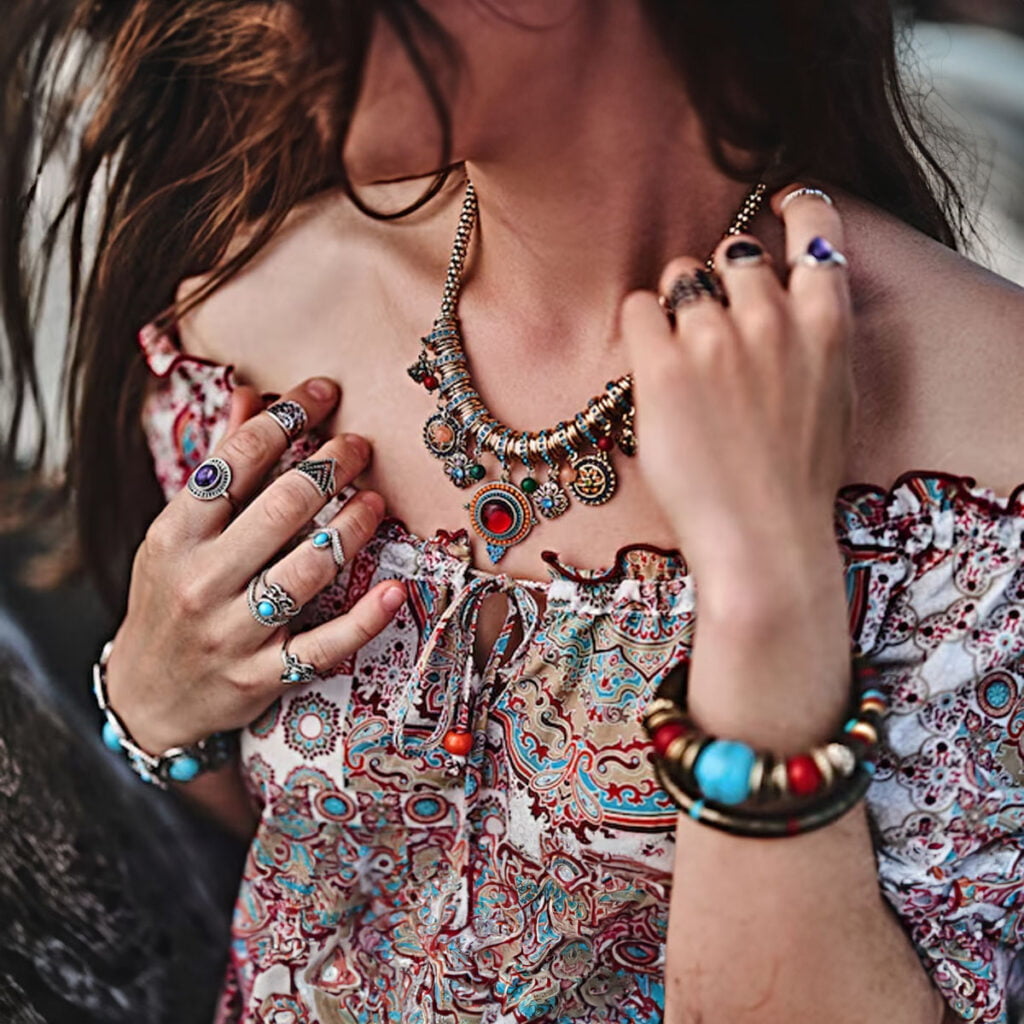
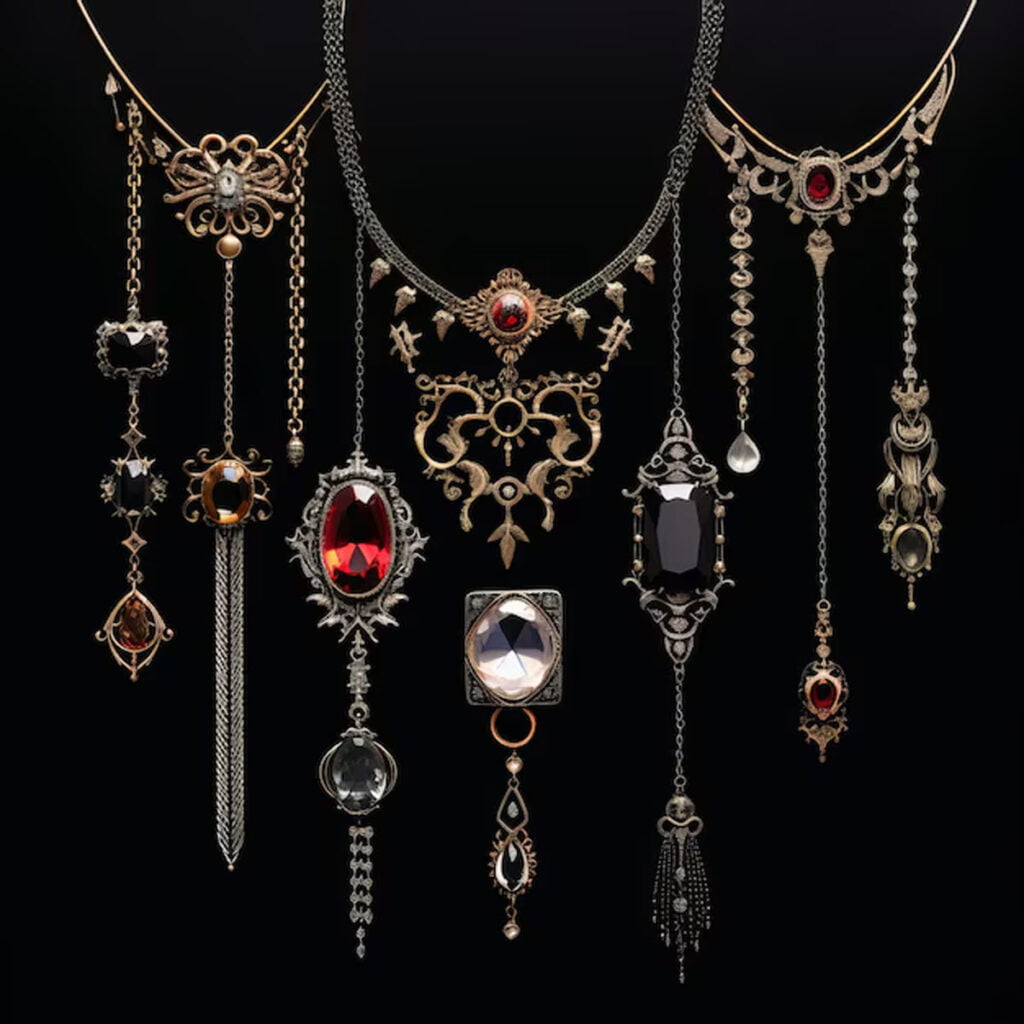
Bohemian Jewellery: Embracing the Free-Spirited Aesthetic
Bohemian jewellery, which first gained popularity in the 1960s and 1970s, is known for its eclectic and free-spirited aesthetic. This style is characterised by the use of natural materials, such as beads, feathers, and stones, and often features intricate patterns and vibrant colours. The boho-chic movement has brought this style back into the spotlight, with bohemian jewellery becoming a popular choice for festivals and casual, everyday wear.
The appeal of bohemian jewellery lies in its ability to express individuality and creativity. Each piece often tells a story, whether through the use of cultural symbols, handcrafted elements, or unique combinations of materials. Bohemian jewellery is not just about accessorising; it’s about embracing a lifestyle that values freedom, nature, and artistic expression. This timeless style continues to resonate with those who seek to make a personal statement through their accessories.
Pearl Jewellery: Classic Elegance with a Modern Twist
Pearls have been cherished across multiple civilisations for their natural beauty and elegance. Pearl jewellery has long been associated with sophistication and timeless style, making it a favourite for both casual and formal occasions. While pearls are undeniably classic, they have recently experienced a modern twist, with contemporary designs incorporating them into a variety of settings.
Modern pearl jewellery is no longer confined to traditional strands and earrings. Designers are now incorporating pearls into rings, bracelets, and even mixed-material pieces, offering a fresh take on this classic gemstone. The versatility of pearls allows them to be both the focal point of a piece or a subtle accent, making them a staple in any jewellery collection. The enduring appeal of pearls, combined with innovative design, ensures that they remain relevant in today’s fashion landscape.
Cluster Rings: A Sparkling Revival of Vintage Glamour
Cluster rings, first created in the 18th century, are characterised by the grouping of multiple stones, often of varying sizes, around a central gem. This style of ring was popular in the Georgian and Victorian eras, and known for its intricate designs and the play of light across the clustered stones. The resurgence of cluster rings in modern jewellery has brought this vintage glamour back into vogue, particularly in engagement rings and custom-designed pieces.
The charm of cluster rings lies in their ability to create a dazzling effect with multiple stones, offering a unique alternative to the traditional solitaire setting. Each ring can be highly personalised, with different gemstone combinations and arrangements that reflect the wearer’s style. Whether it’s a delicate arrangement of diamonds or a colourful mix of gemstones, cluster rings offer a timeless appeal that continues to captivate jewellery lovers.
Gothic Jewellery: Dark Elegance Meets Modern Fashion
Emerging in the 19th century, Gothic jewellery is known for its dark, dramatic designs, often featuring motifs such as crosses, skulls, and intricate metalwork. This style reflects the romanticism and mystery of the Gothic era, with a focus on bold, statement pieces that convey a sense of elegance and intrigue. In recent years, Gothic jewellery has seen a revival, both in high-end fashion and alternative circles, where it is celebrated for its distinctive aesthetic.
Modern Gothic jewellery retains the essence of its origins but has evolved to include contemporary elements, making it a versatile choice for those who appreciate its dark allure. From delicate cross pendants to elaborate rings adorned with black diamonds, Gothic jewellery offers a way to express individuality and a love for the dramatic. Its continued popularity underscores its enduring appeal, making it a style that transcends trends and remains relevant across generations.
Conclusion
The top 12 classic jewellery styles we’ve explored in this article are not just relics of the past; they are living, evolving expressions of history, culture, and personal identity. From the sombre beauty of Victorian mourning jewellery to the bold statements of Gothic jewellery, these styles have captivated the hearts of many and continue to inspire both wearers and designers. Their enduring popularity lies in their ability to adapt to contemporary tastes while maintaining the essence of their origins.
As you consider adding to your jewellery collection or simply admire these timeless designs, remember that each piece tells a story—of its time, of its creator, and of its wearer. Whether you’re drawn to the delicate elegance of Edwardian lace jewellery or the modern sophistication of minimalist jewellery, these classic styles offer something for everyone. They are more than just accessories; they are timeless symbols of beauty and craftsmanship that will continue to be loved for generations to come.
FAQs
- 1. What makes Victorian mourning jewellery special?
- Victorian mourning jewellery is valued for its emotional connection and intricate designs.
- 2. Why is Art Deco jewellery still popular today?
- Art Deco jewellery’s bold geometric designs and timeless elegance keep it in vogue.
- 3. How has minimalist jewellery evolved over time?
- Minimalist jewellery has returned with a focus on clean lines and understated elegance.
- 4. What defines bohemian jewellery?
- Bohemian jewellery is known for its eclectic, free-spirited style, often using natural materials.
- 5. Are cluster rings a good choice for engagement?
- Yes, cluster rings offer a unique, personalised option with multiple stones for added sparkle.
